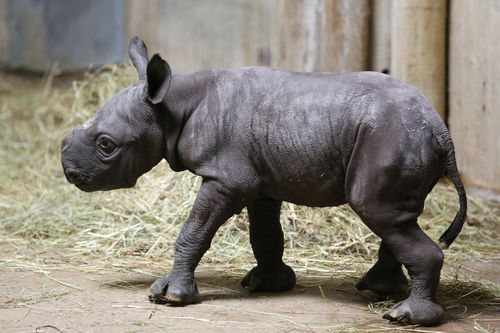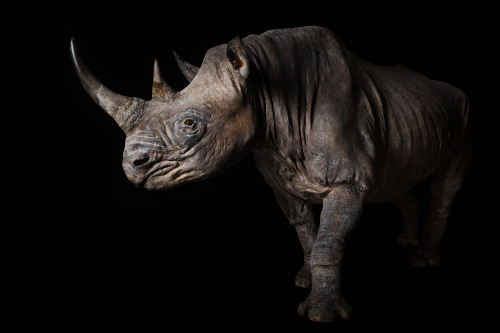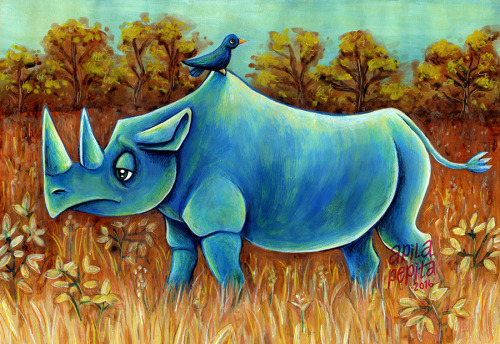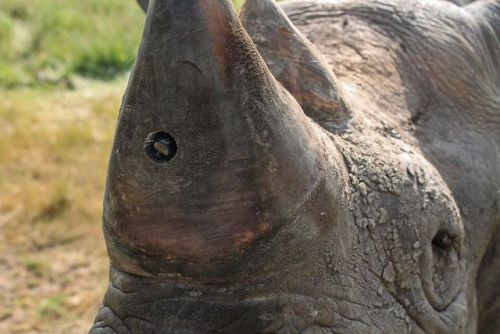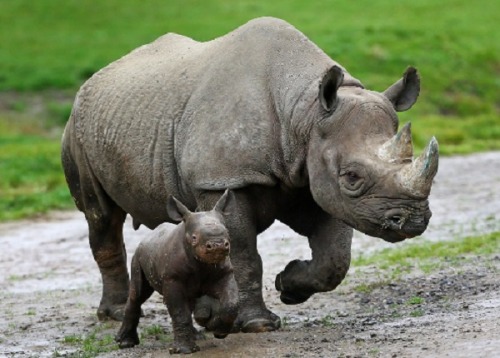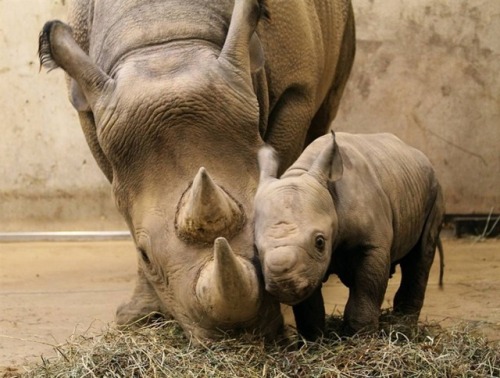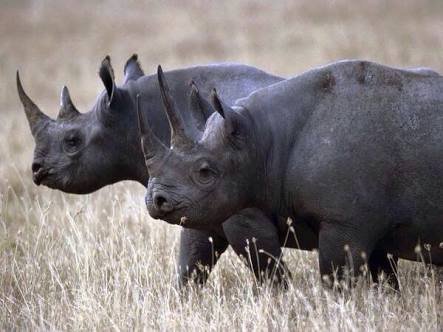#black rhino
Black rhinos are critically endangered on the savannas of southwestern Africa and one black rhino subspecies is already extinct. Rhino horns are made of keratin, the same protein that makes your fingernails. They are extremely valuable on the black market (a ounce of rhino horn is worth more than an ounce of gold), for their uses in Eastern medicine and Middle Eastern ceremonial daggers.
Post link
Black rhino / CAS-MAM 12239
Scientific name: Diceros bicornis
Locality: AFRICA: Kenya, 91 miles east of Nairobi, near upper reaches of Tana River, near Kiambere
Collector: D. Witter
Department:Ornithology & Mammalogy, image © California Academy of Sciences
In context: Watch “Tough Skin, Fragile Future” (3:17) on our YouTube channel to learn how Academy scientists and exhibit conservators transported and prepared this important research specimen, donated to the Academy in 1952, for our recent exhibit, Skin. As habitat loss and poaching push the black rhinoceros closer to extinction in the wild, Academy scientists hope this specimen will inspire visitors and deepen their understanding of today’s most pressing conservation challenges.
Post link
Western Black Rhinoceros(2016)
acrylic paint and crayons on paper, 297 x 420 mm
This species of rhino is unfortunately now extinct due to poaching. It’s horn was very valued and that caused humans to hunt this rhino into extinction.
Post link
The biggest threat to the black rhinoceros is poaching for its horn. Historically, the horn was used by Middle Eastern nations to make handles and hilts for ornate ceremonial daggers called jambiyas. Demand for these daggers was so great that rhino populations plummeted 96% between 1970 and 1992. Now, most rhinos are poached for use in traditional Chinese medicine. Rhino horn for use in medicine has even been discovered for sale in the United States.
Various techniques for protecting rhinos have been attempted, from armed guards to planting cameras and trackers in their horns (second image).
Post link
Black rhinos are solitary animals except for when the females are in heat. A mating pair will stay together for days or weeks, mating several times a day. And they have stamina - a single session of copulation will last over a half-hour.
Fifteen months later, the female gives birth to a single 80 - 110 pound calf. These calves will nurse for up to two years and stay with their mothers for at least another year. Female calves may stay with their mothers even longer, forming small groups of related females.
Post link
Because of its tiny eyes, it was commonly believed that the black rhinoceros has very poor vision. In reality, however, its eyesight is relatively good, comparable to that of a rabbit. It also has excellent hearing and a powerful sense of smell.
Post link
Theblack rhinoceros is smaller than its close relative, the white rhinoceros. It also has a pointed, prehensile upper lip, meant for browsing on leaves, branches and twigs, in contrast to the white rhino’s square upper lip for grazing on grass. Black rhinos also have smaller heads and shorter necks, while white rhinos have a sloped back.
Post link
There were once eight subspecies of black rhinoceros. Three of these subspecies are now extinct, with one, the western black rhinoceros, having gone extinct in 2011. All other subspecies are critically endangered. One in particular, the Chobe black rhinoceroes, may have only one individual remaining.
Post link

